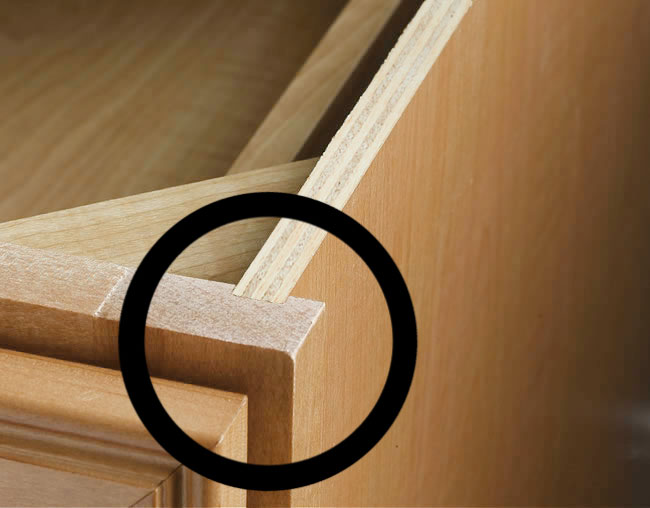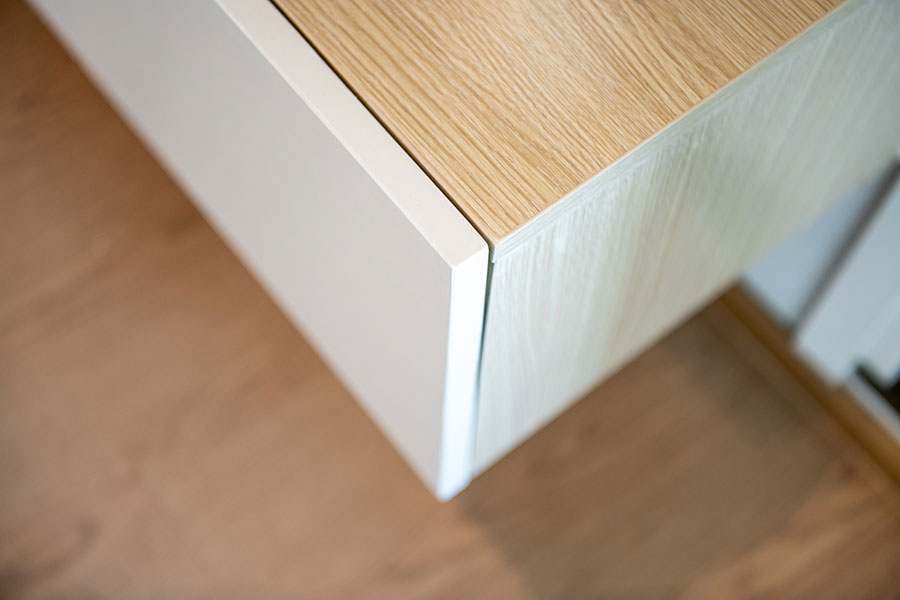A question that frequently comes up in discussions with sales reps towards the end of your buying journey is if you’d like your Conestoga cabinets with a “flush” end or an “exposed” end.
“Exposed” may sound like some sort of unfinished, rough end to your cabinets while “flush” may leave you thinking it’ll be too subtle for the kitchen space you’re planning on creating. However, this isn’t altogether the case.
When you’re ordering Conestoga Cabinets, it’s the small details that make your project stand out. Your choice of cabinet finishes, cabinet hardware, or other details your clients aren’t spending much time on can make a huge difference when tenants or buyers are considering the units you’re creating. The details will affect the cabinet set you choose for a kitchen, bathroom, or office space. We know you’re going for an overall design, so let us help make the right cabinet choices.
Since, Conestoga offers many customizable options, their cabinet ends will be the focus of this guide – specifically flush and exposed ends. Cabinet ends are as important aesthetically as they are practically. For example, when you start designing your appliance layout, you’ll start thinking about how each cabinet base fits together. Conestoga Wood offers both of these options in a high quality package.
Exposed End Conestoga Cabinets: an Overview

Starting simple, let’s look at Conestoga’s “exposed” cabinet end option. As the name and comparison indicates, an exposed cabinet end is a non-flush finished end and is distinguished by how the cabinets are put together. With this option, the cabinet frame will generally stick out about ¼” from the side panel (this is called a “scribe”). The joint is generally no less sturdy than that of the flush cabinet end option, as they both are put together by a small tongue and groove joint. (Interested in the types of woodworking and cabinet joints? Check out this article for more information)
The pros: An exposed cabinet end allows for a bit more flexibility if any errors are made on the field. Consider this option if you’re dealing with multiple homes or units in an apartment building where each space will vary slightly (no one carpenter is the same and no one carpenter is perfect!). As hard as we try to “measure twice, cut once,” some things will just need to be adjusted in the field and the scribe protrusion will make this easy for you and your team.
Tip! Too much space? Consider getting an extended stile to bridge the gap between your cabinet base and the wall.
The pros: Another highlight for most buyers is the price of this option, as it tends to be on the cheaper end of the two cabinet end options. (Talk to our expert sales reps for more information on pricing!)
The cons: this option is, as the descriptor states, not fully “flush” and may not be the most visually appealing if left on the exposed end of a kitchen. While this option is also finished and will not expose any of the material of the cabinets, some buyers prefer a flat side to the protrusion.
Tip! Keep in mind that if you decide to purchase cabinets with an exposed end abutting a wall, you’ll need to notch any crown molding around the ¼” frame extension.
Flush End Conestoga Cabinets: An Overview

The second option Conestoga Cabinets has to offer is the “flush” end. In contrast with the exposed end, as you can rightfully assume, the joint allows for a flush finish between the side and the cabinet face frame.
- For about $8.00 more per side you get a flush end over an exposed end. Most customers for the price difference choose the Flush End.
The pros: Aesthetics! This option makes your cabinets look more customized and throught-out (like all of your Is were dotted and T’s crossed!). You’ll also get away from the look of cheaper, big box store cabinets.
The pros: There will be less need to shim your cabinets if you’re letting your cabinet base hug right up against your appliances or walls. You’ll be able to slide these in with no need to worry about gaps or any shifting.
The cons: Slightly more expensive than the previous exposed option, a flushed cabinet will also require more precise measuring to make sure that the pieces will fit in your predetermined space. Unfortunately, with this option, you won’t be able to shave away any excess (measure twice, [have us] cut once!).
The cherry on top: For less than $10 more per cabinet end, you can get a flush end to round out your project. In fact, most of our customers find this deal a no-brainer, making flush cabinet ends our most popular option!
Steps to making the final decision:
Whether you’re going for the flawless install or the aesthetic, customized look, Conestoga cabinets have the right solution. Like always, consider your options, consider the job and, most importantly, take in mind the finished vision you want for your space. No matter if it’s selling units or designing something that’s the perfect fit for your home, we’ve got you covered.